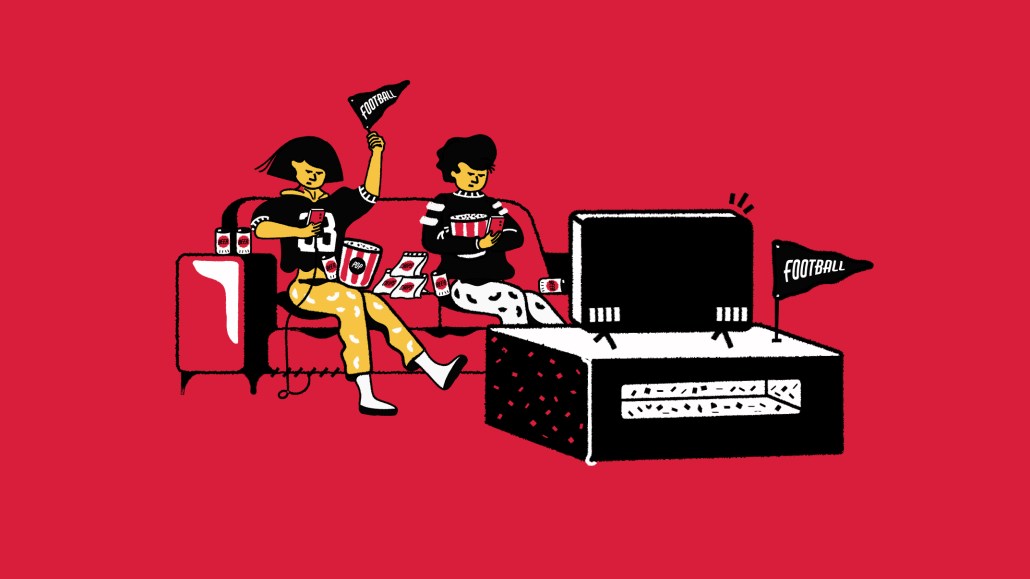Save 50% on a 3-month Digiday+ membership. Ends Dec 5.
How FACEIT is turning its popular competitive gaming platform into inventory for esports ads

Leading competitive gaming platform FACEIT has launched an advertising service, FACEIT Ads. The service will allow brands to reach gamers directly within the esports platform, which administers leagues and tournaments for games such as Counter-Strike, Dota 2 and Rocket League.
Since its founding in 2012, FACEIT has become one of the most popular competitive gaming platforms in the industry, boasting over 23.5 million users worldwide, according to figures provided by the company. The platform, which is accessible through both web browsers and a dedicated desktop application, acts as a community hub for competitive players, hosting major tournaments and providing ranked matchmaking services. Last month, the Saudi-Arabia-backed holding company Savvy Gaming Group acquired the firm, which will soon merge with ESL Gaming, another of SGG’s recent acquisitions.
FACEIT’s millions of loyal users make it valuable to advertisers interested in the esports community — but this is the company’s first advertising offering, and it approached the launch with an air of experimentation. “We need to do some A/B testing, in terms of what creatives work and what works for our audience,” said FACEIT commercial strategy lead Giulia Zecchini.
At the moment, FACEIT provides brands with a range of formats for in-platform ads, including overlaid videos and leaderboard banner ads placed at the bottom of the client. “It’s sticky, where the overlay and video have a very tested logic. The overlay is quite intrusive, and we don’t want to disrupt the user experience,” said FACEIT ad monetization product director Moritz Natalini, who FACEIT hired over from in-game advertising firm Bidstack. “We have created tracking that basically triggers the overlay only when the user comes back from X amount of inactivity. So, for instance, if the user has played a game and has been away from their window for more than three minutes, they come back and they have this prominent image.” (FACEIT declined to provide specific details about the pricing of its advertising product.)
Since FACEIT’s in-platform ads are simultaneously non-disruptive, but still integrated into users’ gaming experience, the company is confident that its new product will satisfy brands without disgruntling gamers. Visually, the overlaid video and banner ads are more or less traditional advertisements; brands are familiar with how they work, and they can be bought and sold programmatically. But “it’s a fully immersive experience,” Zecchini said. “When brands come to FACEIT, they can create these experiences where people are actively participating in a brand activity — they’re not just passively watching it.”
With traditional ad formats embedded alongside a competitive gaming experience, FACEIT Ads represents a middle ground between traditional and in-game advertising. “That would be distractive advertising, not interruptive advertising — and that works,” said Frank Maggio, CEO of the experiential advertising technology firm React. “These people just got off of the rush of playing a game, and they’re getting geared up again for adrenaline.”
In addition to its in-platform ads, FACEIT is also starting to offer consulting services to brands in the gaming space, building more bespoke advertising experiences to create a brand-safe environment. “We can build fully branded gaming experiences,” Zecchini said. “We custom-made a Counter-Strike tournament for Red Bull, which is a two-on-two format, instead of five-on-five.”
The company is also taking the age-old debate of brand safety to heart. “There’s been some edits made to the game as well; instead of having realistic blood, it’s a little bit more futuristic, so that’s great for brands,” Zecchini added.
In addition to the upcoming Intel campaign, FACEIT Ads has already partnered with brands such as Visa and Express VPN — the former through a promotion that garnered 225 million impressions, according to internal figures cited by FACEIT. With gaming activity on the rise, the esports platform’s advertising offering could give brands an opportunity to reach competitive gamers where they stand, but without disrupting their gameplay.
“When I started at FACEIT, one of my goals was to make sure brands, agencies, the classic media buyer would know who FACEIT is, because it’s obviously new to the market,” Natalini said. “But actually, it was very simple. Everybody’s looking for the esports audience.”
More in Marketing

Ulta, Best Buy and Adidas dominate AI holiday shopping mentions
The brands that are seeing the biggest boost from this shift in consumer behavior are some of the biggest retailers.

U.K. retailer Boots leads brand efforts to invest in ad creative’s data layer
For media dollars to make an impact, brands need ad creative that actually hits. More CMOs are investing in pre- and post-flight measurement.

‘AI is permeating everything we do’: How Guitar Center developed 2 AI tools this year
This summer, the company launched a chatbot called Rig Advisor to help customers find the right instruments and products.
Ad position: web_bfu



